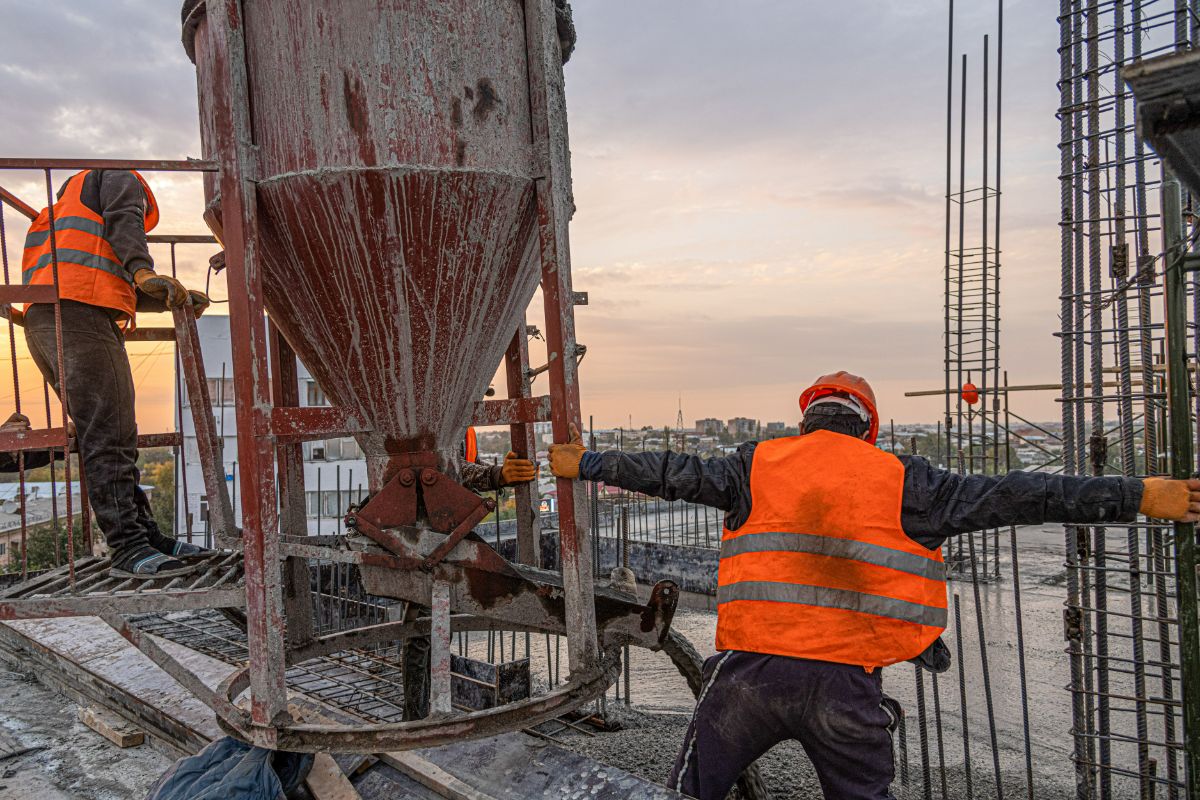

Overview
- Advanced systems and automation technologies enable precise measurement and proportioning of raw materials, streamlining processes and enhancing overall efficiency.
- Understanding these aspects of concrete batching and the benefits of ready mix concrete can empower construction professionals to make informed decisions, ensuring efficiency, reliability, and excellence in their projects.
Starting a construction project requires detailed planning and strategic decisions, especially when it comes to choosing the right construction materials. Understanding the intricacies of concrete batching becomes paramount for contractors and construction groups eyeing the efficiency and reliability of ready mix concrete. The batching plant serves as the heart of the operation, where raw materials are precisely measured, mixed, and transformed into high-quality concrete that forms the backbone of any construction venture.
This is why it’s important to understand the different functions of concrete batching. This location is central to ensuring consistency, strength, and uniformity in the concrete mix. Keep reading to learn more!
A batching plant achieves precise batching through measurement and proportioning of raw materials like aggregates, cement, and water. Calibrated equipment, including digital scales and automated conveyors, ensures accurate dispensing according to predetermined ratios. This commitment to precision, along with advanced mixing techniques, results in a consistent blend.
While it doesn’t promise perfection, this accuracy is crucial for construction, providing uniformity, strength, and reliability in the final concrete product, and meeting quality standards for various construction applications.

There are different parts of a batching plant, but the responsible area for providing a cohesive mixture is the twin-shaft mixer. This is used during the mixing phase. This vital component facilitates an intricate process of homogenization and blending.
The mixer’s dual, counter-rotating shafts initiate thorough mixing, effectively combining cement, aggregates, water, and additives. This mechanical synergy creates a uniform and well-balanced concrete blend. The intense agitation within the mixer promotes the dispersion of cement particles, reducing clumps and enhancing cohesion.
As the mixture progresses, it undergoes multiple folds and shears, further ensuring a consistent composition. This meticulous approach results in a concrete mix of superior quality, promoting the desired attributes of strength, durability, and workability essential for diverse construction applications.
The precise batching and cohesive mixture done inside batching plants is possible through controlled production. This is done through a series of calibrated and automated processes.
The precise measurement and proportioning of raw materials, including aggregates, cement, and water, are achieved through advanced systems. Automated conveyors and digital scales accurately dispense each component according to predetermined ratios. This control over material quantities, coupled with mixing techniques in twin-shaft mixers, guarantees a homogenous blend.
The entire process, from aggregate feeding to mixing and loading, is streamlined and automated, minimizing manual intervention. Strict adherence to standardized measurements and automation technologies ensures that each batch meets exact specifications. This level of control enhances the overall efficiency of the production process, contributing to the consistent quality and reliability of the ready-mixed concrete output.

Quality assurance in batching plants is meticulously conducted through a combination of advanced technologies and stringent protocols. Automated systems monitor and control every stage of the concrete production process, from aggregate feeding to mixing and loading. The use of digital scales, sensors, and calibration mechanisms ensures precise measurement and proportioning of raw materials. Additionally, regular maintenance and calibration checks on equipment uphold accuracy.
Quality control technicians also conduct thorough inspections, sampling, and testing of the concrete mix to verify its adherence to specified standards. Any deviations or irregularities are promptly addressed, maintaining the consistency and quality of the ready-mixed concrete.
These comprehensive measures, coupled with adherence to industry regulations, contribute to the reliability and excellence of the final product, instilling confidence in construction professionals and end-users alike.
Ready mix concrete made from these batching plants is a versatile construction material suitable for various projects, providing enhanced efficiency, quality, and cost-effectiveness.
Construction professionals, from contractors to builders, can leverage its advantages across a spectrum of projects.
Ready mix concrete’s consistent quality and strength make it an ideal choice for constructing tall structures. The controlled production process ensures uniformity, essential for the structural integrity of high-rise buildings.
Whether it’s roads, bridges, or tunnels, this type of concrete accelerates construction timelines. Its reliable strength and durability contribute to the longevity of infrastructure projects.
From foundations to walls and floors, concrete from these batching plants offers a reliable and convenient solution for residential construction. Its versatility meets the demands of diverse home-building requirements.
Ready mix concrete is the go-to choice for constructing commercial buildings. Its efficient production and timely delivery support the swift completion of commercial projects.
The durability and strength of this type of concrete make it an essential material for industrial facilities. It withstands heavy loads and harsh conditions, ensuring the longevity of structures in industrial settings.
Now that you understand the different functions of concrete batching. You can find the best company to help you on your next project. Here at Big Ben, we have two batching plants that cater to various projects in the North of Metro Manila and nearby provinces. Contact us today for a quotation!